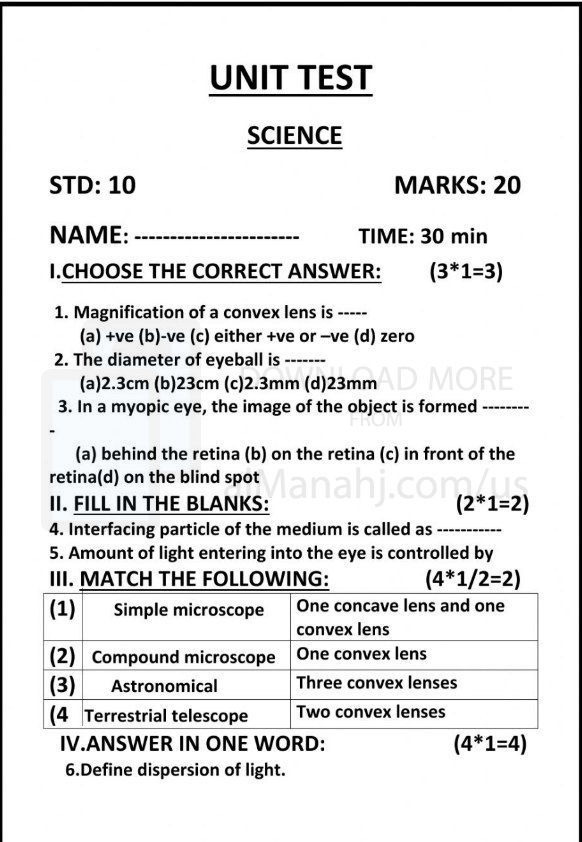| You are here: Almanahj Website ⇒ American curriculum ⇒ 9th Grade ⇒ Physics ⇒ Term 1 | ||
|---|---|---|
Worksheet about Optics physics | ||
|---|---|---|
| Subject: Physics | ||
| 9th Grade | ||
| Term 1 | ||
| Year: 2023/2024 | ||
| Size: 317.8KB | ||
| Number of clicks: 83 | ||
| Publish date:November 07, 2023 | ||
| Added by: Eman | ||
| Last download date: 2024-09-07 16:05:57 | ||
| Updated by: Eman9966 on 2023-11-07 13:13:20 | By: theodor v_Aruna_Balakrishnan | |
| File info: Optics physics is the branch of physics that deals with the study of light and its behavior. It explores how light interacts with matter, how it travels, and how it is perceived by our eyes. Here's a description of optics physics: 1. Nature of Light: Optics physics begins by examining the nature of light. Light is an electromagnetic wave composed of oscillating electric and magnetic fields. It travels in straight lines at a constant speed in a vacuum, known as the speed of light. 2. Reflection: Reflection is a fundamental concept in optics physics. It describes the bouncing back of light when it encounters a surface. The law of reflection states that the angle of incidence, which is the angle between the incident light ray and the normal to the surface, is equal to the angle of reflection, the angle between the reflected light ray and the normal. The reflection of light allows us to see objects through mirrors and other reflective surfaces. 3. Refraction: Refraction occurs when light passes from one medium to another and changes direction due to a change in its speed. The change in speed is caused by a change in the optical density of the medium. This phenomenon is governed by Snell's law, which relates the angles of incidence and refraction. Refraction is responsible for phenomena such as the bending of light in a glass prism and the formation of rainbows. 4. Lenses: Lenses are transparent objects that can refract light and focus it to form images. Optics physics studies the behavior of convex and concave lenses. Convex lenses converge light to a focal point, allowing the formation of real and inverted images. Concave lenses, on the other hand, diverge light and create virtual and upright images. Lenses are used in various optical devices, such as cameras, eyeglasses, and telescopes. 5. Optical Instruments: Optics physics involves the study of various optical instruments and their principles of operation. Examples include microscopes, telescopes, cameras, and spectrometers. These instruments utilize lenses, mirrors, and other optical components to manipulate and detect light for scientific observations, imaging, and analysis. 6. Wave Optics: Wave optics, also known as physical optics, focuses on the wave-like nature of light. It explores phenomena such as interference, diffraction, and polarization. Interference occurs when two or more light waves overlap, either constructively or destructively, resulting in bright or dark regions. Diffraction refers to the bending and spreading of light waves around obstacles or through narrow openings. Polarization deals with the alignment of light waves in a particular direction. 7. Optics and Vision: Optics physics plays a crucial role in understanding human vision. It explores how light enters the eye, is focused by the lens, and forms an image on the retina. It also investigates topics such as color vision, optical illusions, and the correction of vision problems through the use of eyeglasses or contact lenses. Optics physics encompasses a wide range of phenomena and applications, from understanding the nature of light itself to the design and operation of optical devices. It continues to advance our knowledge of light and its interactions, enabling us to explore the world around us and develop innovative technologies. | ||
| Downloading link Worksheet about Optics physics |
|---|
|
1699359781.pdf
The file is being prepared for download
|
| File images |
|---|
 |